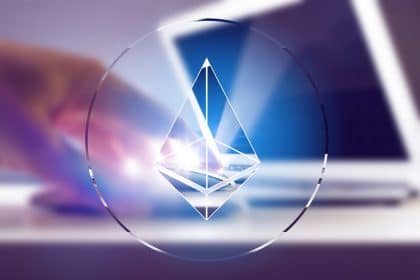Vitalik Buterin presented a detailed roadmap ahead for the transitions to the PoS Ethereum 2.0. He talked about sharding implementations and the use of scalability solutions like rollups.
Earlier this week on Tuesday, December 1, the Ethereum 2.0 Beacon Chain finally went live as stakers successfully pledged over 524,288 ETH to trigger the launch. The Beacon Chain is the Phase 0 development of Ethereum 2.0 which will likely undergo a complete transition to the PoS model in the next two years. On Wednesday, December 2, Ethereum co-founder Vitalik Buterin published an updated roadmap post the Ethereum 2.0 Beacon Chain launch. The roadmap presents complete details and a vision for Ethereum 2.0 five-to-ten years down the line.
The roadmap I made back in March updated with (very rough and approximate!) progress bars showing what has been done and some of the recent tweaks to the roadmap itself.
A lot has been accomplished, but still a lot remains to be done! pic.twitter.com/4zIK4aTNTh
— vitalik.eth (@VitalikButerin) December 1, 2020
As we know, the Ethereum 2.0 implementation comes in several different phases. The Phase 0 Beacon Chain implementation enables staking feature but does little at the application layer. Similarly, Phase 1 introduces features like sharding of data, and improve storage capabilities without changing the application performance. Phase 2 brings transactions sharding allowing the network to process thousands of transactions per second.
With his latest tweet, Vitalik Buterin presents a detailed roadmap suggesting what’s next for the Ethereum 2.0 platform ahead. The next major milestone in the development is the transitioning of Etherem to Proof-of-Stake. This includes the introduction of ETH 2 light clients on the existing Ethereum blockchain along with data sharding. Note that all the upcoming developmental steps are largely interdependent and can work in parallel.
Implementation of Layer-2 Scaling Solutions Like Rollups
During October 2020 when the ETH gas fee was skyrocketing, Vitalik Buterin requested Ethereum platform users to start moving to layer-2 scalability solutions like rollups.
One part of the scalability improvements includes hosting rollups on a shared data structure. Rollups take away the network burden partially by taking computations outside the chain but still guarantees its correct implementation through the proofs stored on-chain. The implementation of rollups could enable more than 10,000 transactions-per-second as soon as light clients and data sharding comes into the picture.
However, there’s still a long road ahead as the progress on data sharding is still less than 50%. It will take an additional 1 year to build the Phase 1 developments. Also, the development of other advanced types of cryptographic technology is very much in the early stage.
Buterin has also requested the quick implementation of the EIP-1559 protocol. This proposal seeks a majority of the transaction fee collected by the protocol instead of giving it to the miners.
Bhushan is a FinTech enthusiast and holds a good flair in understanding financial markets. His interest in economics and finance draw his attention towards the new emerging Blockchain Technology and Cryptocurrency markets. He is continuously in a learning process and keeps himself motivated by sharing his acquired knowledge. In free time he reads thriller fictions novels and sometimes explore his culinary skills.




